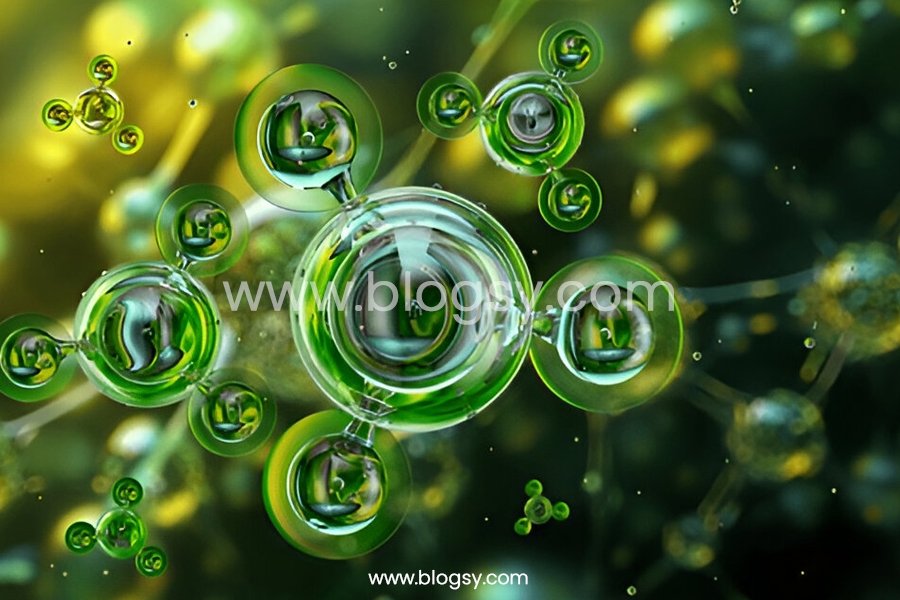
The chemical formula hcooch ch2 h2o refers to a combination involving formic acid (HCOOH), a methylene group (CH2), and water (H2O). In organic chemistry, this type of arrangement is important because it helps explain how simple molecules interact to form more complex compounds. Whether you’re a student learning about chemical bonding, a researcher in organic synthesis, or simply curious about how these formulas work, understanding HCOOH · CH2 · H2O gives you a solid foundation in the basics of chemical reactions, structural formulas, and applications in real-world industries.
In this article, we’ll explore the structure, properties, reactions, uses, environmental importance, and safety aspects of HCOOHCH2H2O. We’ll also look at comparisons with other related molecules, FAQs for quick clarity, and end with a meta description and SEO-ready slug so your content is perfectly optimized.
What is HCOOCH CH2 H2O?
The chemical notation hcooch ch2 h2o can be broken down into its components:
-
HCOOH (Formic Acid): The simplest carboxylic acid, naturally found in ants and known for its strong pungent odor.
-
CH2 (Methylene Group): A building block in organic chemistry that acts as a linking unit.
-
H2O (Water): The universal solvent, essential in most chemical reactions.
Together, these components highlight a fundamental concept in chemistry — how small molecules combine or exist in equilibrium during organic reactions.
👉 In simple terms, hcooch ch2 h2o represents the interplay between carboxylic acids, hydrocarbons, and water molecules.
Chemical Structure of HCOOCH CH2 H2O
To understand hcooch ch2 h2o, let’s break down the molecular structure:
-
Formic Acid (HCOOH): Contains a carbon atom double-bonded to oxygen (C=O) and single-bonded to a hydroxyl group (–OH).
-
CH2 Group: Acts like a bridge in organic molecules, often seen in methylene linkages.
-
Water (H2O): Polar molecule with two hydrogens bonded to oxygen, capable of hydrogen bonding.
Representation
A simplified way to visualize this is:
This shows how the interaction may produce an intermediate ester or related compound.
Properties of It
Understanding the properties of hcooch ch2 h2o is essential for recognizing its importance in reactions.
Physical Properties
| Property | Description |
|---|---|
| Appearance | Colorless liquid (formic acid + water mixture) |
| Odor | Sharp, pungent (similar to vinegar but stronger) |
| Solubility | Highly soluble in water and alcohols |
| Boiling Point | ~100–101°C (depending on ratio with water) |
| Density | Slightly higher than water |
Chemical Properties
-
Polarity: Highly polar due to the presence of formic acid and water.
-
Acidity: Acts as a weak acid in solution (pKa ~3.75).
-
Reactivity: Reacts with alcohols to form esters, reacts with bases to form salts.
-
Stability: Stable under normal conditions but decomposes at high temperatures.
How HCOOCH CH2 H2O is Formed
hcooch ch2 h2o can be formed in different ways:
1. Natural Formation
-
Found in trace amounts in biological processes involving organic acids.
-
Present in nature as part of metabolic cycles in microorganisms.
2. Laboratory Preparation
-
Produced by reacting formic acid with formaldehyde (HCHO) in the presence of water.
-
Esterification processes can also lead to intermediates resembling hcooch ch2 h2o.
3. Industrial Formation
-
Used in chemical industries for preparing solvents, preservatives, and intermediates in polymer production.
Reactions Involving it
Because hcooch ch2 h2o involves formic acid and water, it participates in many important reactions:
1. Esterification Reaction
Formic acid reacts with alcohols in the presence of acid catalysts to form esters:
2. Hydrolysis
Esters formed from hcooch ch2 h2o can undergo hydrolysis to regenerate formic acid and alcohol.
3. Oxidation
Formic acid can be oxidized to carbon dioxide and water, making it a reducing agent in redox chemistry.
4. Neutralization
When mixed with bases like NaOH:
Applications of HCOOCH CH2 H2O
The significance of hcooch ch2 h2o extends beyond textbooks. It has practical uses in several industries:
1. Industrial Applications
-
Textile Industry: Used in dyeing and finishing processes.
-
Leather Industry: Helps in tanning and preservation.
-
Agriculture: Acts as a preservative for silage and feed.
2. Pharmaceutical Uses
-
Basis for synthesizing intermediates in drug manufacturing.
-
Used in producing certain antibiotics and pain relievers.
3. Chemical Research
-
Plays a role in studying esterification, hydrolysis, and reduction reactions.
-
Acts as a model compound in organic reaction mechanisms.
4. Environmental Applications
-
Helps in biodegradable polymer development.
-
Studied for its role in green chemistry as a renewable chemical feedstock.
Biological and Environmental Significance
Biological Role
-
Found in ants and bees as part of their venom (formic acid).
-
Involved in metabolic reactions in microorganisms.
Environmental Importance
-
Naturally biodegradable.
-
It can be used as an eco-friendly preservative.
-
At high concentrations, it may cause acidification in soils and water.
Difference Between Other Related Compounds
To make things clearer, here’s a comparison table:
| Compound | Formula | Key Difference |
|---|---|---|
| HCOOH (Formic Acid) | HCOOH | Pure acid, no water or methylene group |
| HCOOCH CH2 H2O | Mix/derivative | Combination involving CH2 and water |
| CH3COOH (Acetic Acid) | CH3COOH | Larger structure, weaker reducing agent |
| HCHO (Formaldehyde) | HCHO | Aldehyde, no –OH group |
Safety, Handling, and Precautions
When working with hcooch ch2 h2o, proper safety measures are important:
-
Toxicity: Can cause skin irritation and eye damage in concentrated form.
-
Protective Gear: Use gloves, goggles, and lab coats.
-
Ventilation: Always handle in a well-ventilated area.
-
Storage: Keep in tightly sealed containers, away from strong oxidizing agents.
Future Research and Advancements
Chemists continue to explore new ways to use hcooch ch2 h2o in:
-
Green Chemistry: As a renewable feedstock for biodegradable plastics.
-
Energy Storage: Potential role in fuel cells as a hydrogen source.
-
Medicine: Advanced drug intermediates derived from formic acid pathways.
Conclusion
The formula hcooch ch2 h2o may look simple, but it represents a world of chemistry involving formic acid, methylene groups, and water. From industrial applications to pharmaceutical importance, from biological significance to environmental roles, this molecule is far more valuable than it seems at first glance.
By understanding its structure, properties, reactions, and uses, we can see why hcooch ch2 h2o remains important in both academic studies and real-world industries.
FAQs
Q1. What is hcooch ch2 h2o in simple words?
It’s a formula that represents formic acid, a methylene group, and water, showing how small organic molecules interact.
Q2. Is hcooch ch2 h2o the same as formic acid?
Not exactly — it involves formic acid but also includes CH2 and H2O as part of the arrangement.
Q3. Where is hcooch ch2 h2o used?
It is used in textiles, leather processing, pharmaceuticals, agriculture, and chemical research.
Q4. Is hcooch ch2 h2o safe?
In small, diluted amounts, it is safe, but concentrated formic acid can cause irritation and must be handled with care.
Q5. Why is hcooch ch2 h2o important in chemistry?
Because it demonstrates fundamental reactions like esterification, hydrolysis, and redox processes.
Don’t miss out on any news—keep in touch for real-time information, visit: Blogsy!



